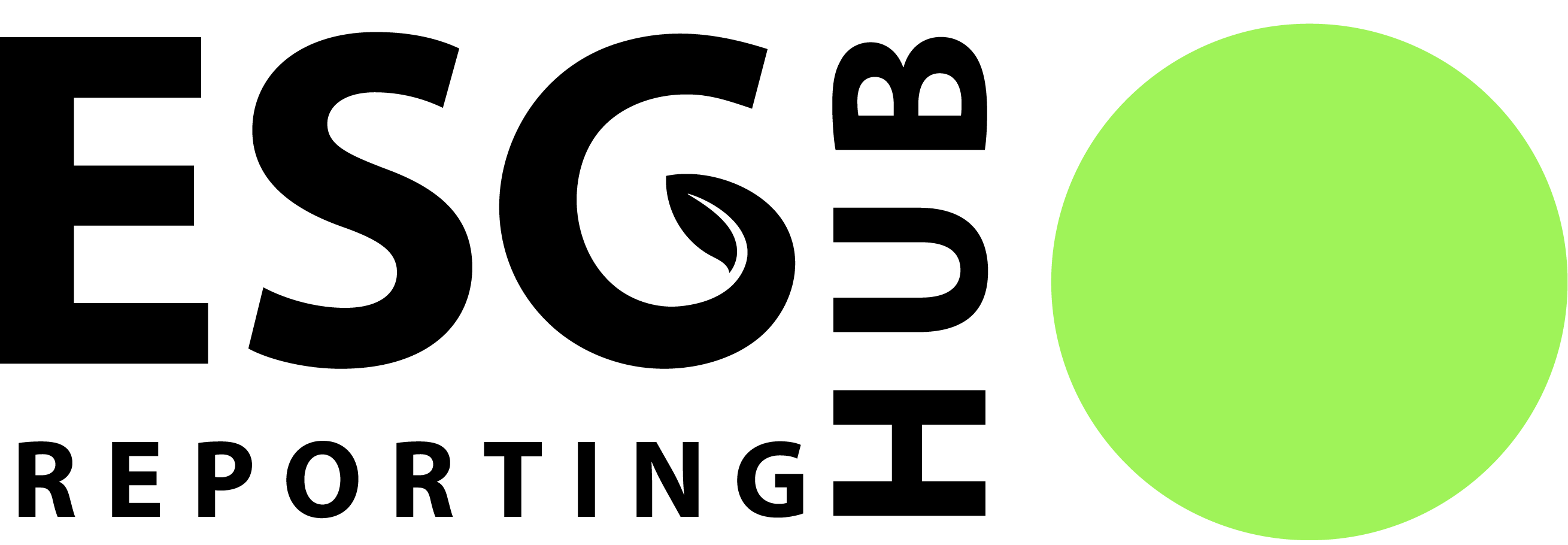IFRS Strategy Disclosure
Learn about the required strategy disclsoures found in IFRS S1 and S2, and how they can be presented in a sustainability report.

The Sustainability Accounting Standards Board (SASB) has issued two standards outlining required sustainability disclosures for companies: IFRS S1 – General Requirements for Disclosure of Sustainability-related Financial Information and IFRS S2 – Climate-related Disclosures. These documents cover four key areas requiring disclosure: governance, strategy, risk management, and metrics and targets. This article will explore the content of the strategy requirement, focusing on S1 to keep the discussion concise. S1 and S2 are largely similar; any significant differences in S2 will be found in the toggles below.
In general, entities are required to disclose “the approach [strategy] the entity uses to manage sustainability-related risks and opportunities.” More specifically, the strategy disclosure is broken into five distinct sub-topics, covering relevant sustainability-related risks and opportunities (SRROs) and how these SRROs affect the entity’s business model and value chain, strategic decision-making, financial performance, and resilience. Each of these sub-topics are discussed below.
Sustainability-related Risks and Opportunities
S1 specifies that companies must disclose information that “enables users of general-purpose financial reports to understand the sustainability-related risks and opportunities that could reasonably be expected to affect the entity’s prospects.” Examples of SRROs are provided in the Salesforce disclosure presented below. As part of this process, companies must describe the SRROs and the time horizons over which effects of SRROs could occur. Since various other articles have been written about identifying relevant sustainability-related risks and opportunities, like our article here, the emphasis of this article will be on the disclosure’s included time horizons.
The SRROs must be categorized into short-, medium-, or long-term time horizons, as determined by the company. Although S1 does not provide in-depth guidance on how entities should define these timeframes, it does present several factors that could contribute to the classification. These factors encompass industry-specific traits like cash flow, investment and business cycles, capital allocation plans, and the periods during which users of financial statements perform industry assessments. For example, retail companies often assume that “short-term” refers to conditions occurring within their year-long business cycle. However, construction companies, whose business cycles extend well beyond a year due to contract work completion, may assert that anything within their five-year business cycle qualifies as short-term. The S1 Basis for Conclusion also notes that these time horizons may stem from or align with timelines for management processes, such as rolling forecasts or budget projections.
Bank of America addressed this in its 2023 TCFD Report. At the report’s outset, it describes how it divides climate-related risks and opportunities into short-, medium-, and long-term time horizons, as depicted in the image below.
Similarly, Salesforce provides a detailed breakdown of the time horizons associated with its climate risks and opportunities. The table below, recreated from its 2021 TCFD Report, assigns each risk and opportunity a specific time horizon, enhancing clarity for investors about the company’s objectives.
As a side note, both Bank of America and Salesforce created these reports in line with the TCFD framework, distinct from the IFRS S1 or S2 framework. Nevertheless, due to significant similarities between the standards, these reports serve as valid illustrations of how companies can report on the time horizons associated with their risks and opportunities. It is also worth pointing out that these two companies focused on climate-related risks and opportunities, which align more closely with S2 (see below). For firms required to align to S1, other types of sustainability-related risks and opportunities must also be included and assigned an appropriate time horizon.
Business Model and Value Chain
Under S1 guidance, an entity must disclose information that enables users of the financial reports to understand the effects of SRROs on the entity’s business model and value chain. According to the S1 appendix, a business model is “an entity’s system of transforming inputs through its activities into outputs and outcomes that aims to fulfill the entity’s strategic purpose and create value for the entity.” A value chain is “the full range of interactions, resources, and relationships related to a reporting entity’s business model and the external environment in which it operates,” including those used at any point from product or service conception to end-of-life.
The primary disclosures required revolve around the effects of SRROs on the business model and value chain, pinpointing where these SRROs are concentrated throughout these processes. Concentration may be based on geographical location, facilities, or types of assets.
An entity’s business model is often quite straightforward, representing the process by which a company creates value. It is typically explicitly outlined within the entity and can take various forms like direct sales, manufacturing, or franchising. Each of these models further breaks down into specific strategies for carrying out company objectives.
Conversely, identifying an entity’s value chain is more complex. Depending on what product or service the business specializes in, the value chain could consist of hundreds of departments, suppliers, and activities. S1 disclosures focus on the resources or relationships used by an entity to create products or services, spanning internal departments (like human resources or marketing), external parties (such as supply and distribution channels, materials souring, or delivery methods), and broader operational contexts (such as the financing, geographical, geopolitical, and regulatory environments). That is a lot to consider! The scope for these value chains is broad and without a defined limit. S1 emphasized that companies must “use all reasonable and supportable information that is available to the entity at the reporting date without undue cost or effort” to disclose material information in its reports. For more details on what that information includes, please visit the article linked here.
While this task may seem daunting, examples provided in S1 make it more manageable. For instance, a beverage company recognizing water as a core aspect of its business model might disclose how its water use impacts the water supply for both the business and the broader community. It could explore the risks of over-consumption, including reputational damage, customer loss, and regulatory fees. The entity might further describe how these risks are assessed across its supply chain, emphasizing processes or geographical areas where it’s more relevant. This type of discussion introduces an SRRO and describes how it plays into the business model and how it might be concentrated throughout the value chain.
In another example, a clothing brand company might be considering an opportunity to use less resource-intensive packing materials. This key component of the business model will appeal to customer’s preferences for sustainable practices. The entity could disclose the areas of the value chain most impacted by this change, such as packaging and delivery processes, and explain the programs implemented to assess and monitor this opportunity.
Strategy and Decision-making
In this section, entities are required to disclose information about how SRROs have influenced their strategies and decisions. Specifically, companies must disclose 1) how the entity has responded, or plans to respond, to SRROs in its strategy and decision-making, 2) qualitative and quantitative information about the progress made against plans outlined in previous reports, and 3) trade-offs between SRROs that the entity considered.
S1 provides an example of trade-off considerations. If a company was deliberating a new operations location, it may have weighed the environmental impacts of the operations against the employment opportunities it would create. In the report, the company could explore these opposing risks and opportunities, using qualitative or quantitative information to support the final decision made.
Companies structure their reports to fulfill these disclosure requirements in varied ways. Most companies split the report into distinct sections covering governance, strategy, risk management, and metrics and targets. This organizational approach closely follows the overall structure of required disclosures in S1, making it easy to ensure that all requirements are met. Within the strategy section, companies discuss specific related risks and opportunities, plans, progress, and trade-offs. However, because S1 does not specify a certain way to structure strategy disclosures, companies are free to choose any method that works best for them.
Financial Position, Financial Performance and Cash Flows
This is the most extensive segment under the “Strategy” heading, likely due to the heightened interest of report users in understanding how SRROs impact the company’s finances. In general, this section requires companies to disclose information regarding the current and anticipated effects of SRROs on the entity’s financial position, financial performance, and cash flows. Specific details on these disclosures are extensively discussed in our dedicated article here. While the referenced article focuses solely on S1, it’s worth noting that the “Financial position, financial performance and cash flows” section in S2 closely mirrors that of S1, with a focus on CRROs rather than broader sustainability-related risks and opportunities. For further insights into this section and its implications, we encourage you to explore the referenced article.
Resilience
The final strategic category that necessitates disclosure is resilience. Companies must disclose information regarding their ability to adapt to uncertainties arising from SRROs. This disclosure must include a qualitative assessment, and if applicable, a quantitative one, evaluating the resilience of its strategy, along with details about how and when the assessment was conducted. Depending on the topic, other IFRS standards may specify the type of information to be included in the assessment. For example, S2 requires companies to perform a climate-related scenario analysis to explore the resilience concerning CRROs. Further explanation of this analysis can be found in our articles here and here (links forthcoming).
Disclosures around other non-climate-related risks and opportunities are harder to visualize. As of the writing of this article, no companies had implemented IFRS S1 and successfully disclosed their resilience to SRROs. However, Barclay released a Resilience Statement along with its other 2023 documents. In it, the company outlines ways it is resilient within different topics in its business, such as regulatory compliance, operational disruptions, workforce, and technology. Barclay’s assessment of its resilience in these areas is strictly qualitative. While it does not align with IFRS S1, it does illustrate different topics and content that could be considered for an IFRS-compliant report.
The S1 basis for conclusion draws a crucial distinction between the resilience analysis and the anticipated financial effects analysis. While the resilience disclosure focuses on the entity’s ability to cope with SRRO effects in different scenarios, the financial disclosures emphasize the impact of these SRROs on financial performance. Therefore, “an entity is not required to carry out a resilience assessment to determine the anticipated financial effects of SRROs.” However, a company may include financial measures in its resilience analysis if it deems it helpful. The discussion on resilience is more of a high-level exploration of an entity’s ability to react to change, instead of a detailed numerical analysis.
Conclusion
The strategy disclosure is an important part of reporting under the new IFRS S1 and IFRS S2 standards. It serves as a key resource for users of the reports, enhancing their understanding of a company’s sustainability position and its proactive measures to address future sustainability-related challenges. These disclosures aim to foster transparency and accountability with regard to sustainability, as well as provide insights and information that are expected to empower users in their decisions.


